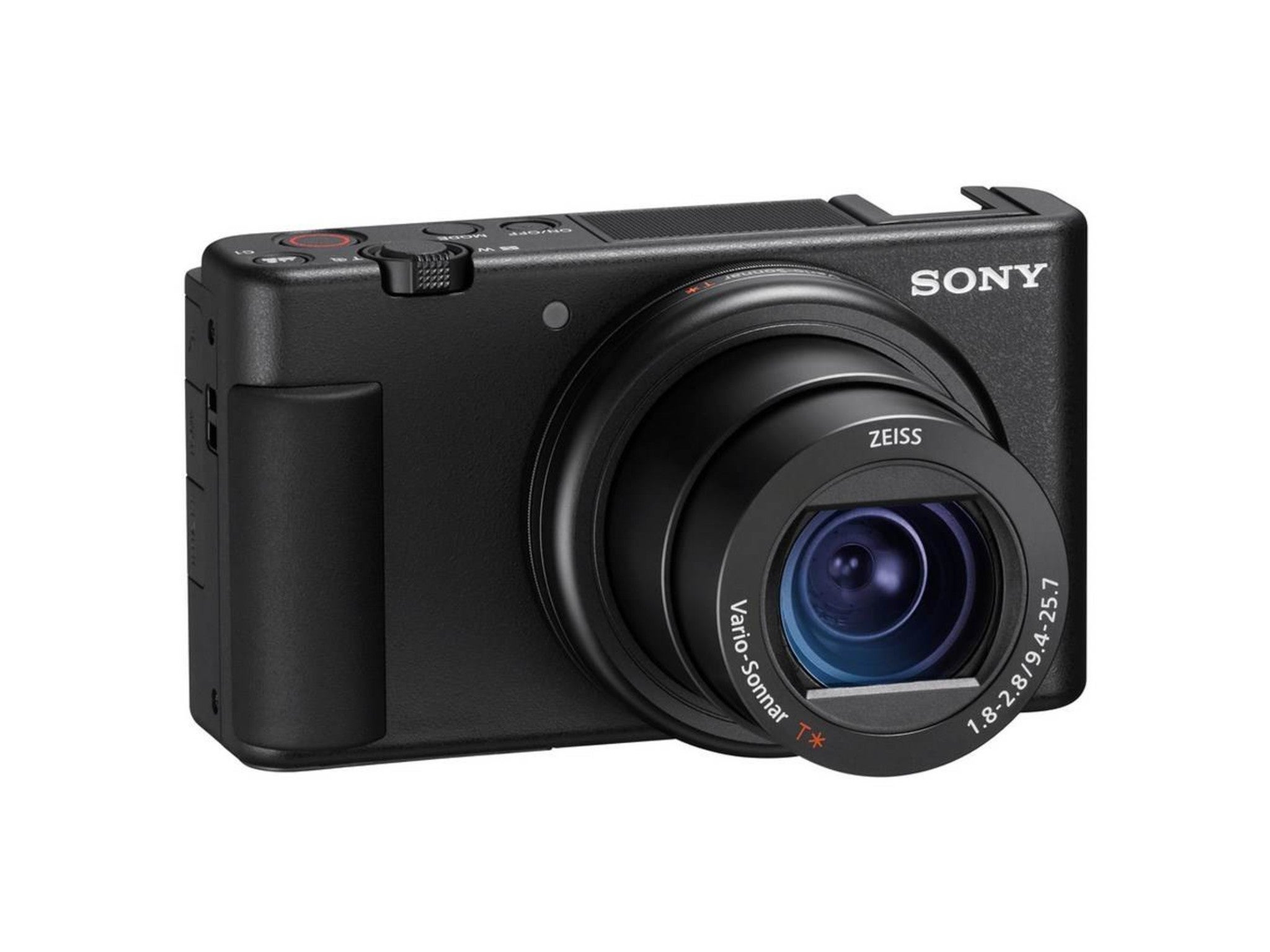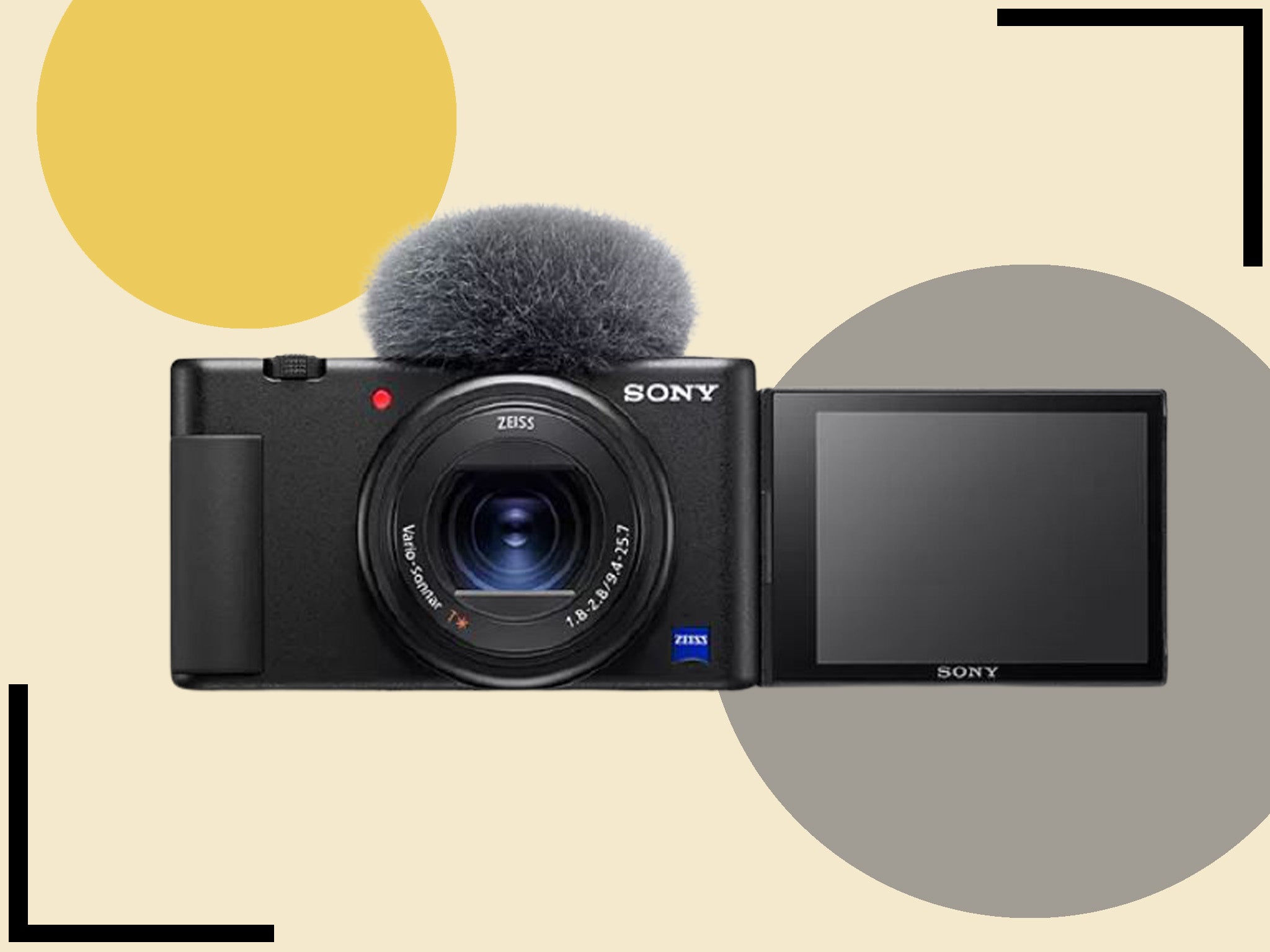Sony ZV1 compact camera

Buy now £658.97, Amazon.co.uk
- Weight: 294g
- Megapixels: 20.1
- Viewfinder: No
- Memory Card: 1x SD/SDHC/SDXC
- 4K Video: Yes at 25/30p
- Autofocus: 315/425 point hybrid phase/contrast AF
- ISO Sensitivity: 100-12800
- LCD Monitor: Vari angle non-touchscreen except for focus pull
- Rating: 8/10
A first look
From the moment you lift the ZV-1 out of the box, you immediately get the impression that this is an easy to use, lightweight and compact device. At first glance we did notice the lack of an electronic viewfinder – which we would have liked to have seen, and think many will miss this option for taking still photos – but the introduction of a large tilting screen makes up for this. This therefore would be a camera well-suited for those whose primary concern is creating video content.
For accessories, there’s a space on top for hotshoe devices, and a number of different inputs on the side of the camera. We found it really easy to plug in a 3.5mm microphone, for example, which is a vital aspect for recording YouTube videos. We were a little surprised to see the unit is still using a micro USB for charging and transfer, rather than the more reliable, newer and faster USB-C, but it’s not really a deal breaker in our opinion.
Read more: 9 best camera bags for protecting your equipment
Ergonomically the camera is well set up, and it feels nice to use in the hand, especially given the introduction of a small hand grip on the side of the device which appears to work well. The screen itself is crystal clear and we were impressed by its quality.
That being said, it does have fairly limited touchscreen abilities and we would have liked to have seen the opportunity to navigate menus using the screen to make life a bit easier. You can change focus using the screen by pressing on the image, but that’s about it, and that does make the device a little fiddler to use than it needs to be.
Features
When it comes to quality, features and operation however, it’s all good news. This camera combines the best of other compact versions, like the aforementioned RX100, with the brand’s updated Bionz X processor. We found that there was a real benefit in having the larger 1in sensor on the ZV-1 twinned with the 24-70mm lens. It’s fast, bright and able to run at low ISO settings even in relatively dark conditions, and we found this also led to a pleasing visual quality that had very little noise and remained sharp.
Read more: 8 best compact cameras for the perfect shot every time
The quality of this lens matched with the superb autofocus system means the ZV-1 offers a compelling solution to video makers. While recording video, we found that the face detection and eye tracking technology did a great job of matching focus to where our eyes went. That makes a big difference to the quality of the visuals, especially in lower light conditions.
The software used here is actually the same as in Sony’s higher-end A9 full frame series of cameras (£2,999, Centresdirect.co.uk) and the updated spec in this instance is noticeable. Focus is confident, decisive, quick and able to shift easily, quietly and without fuss.
We liked the ability to turn on the in-built ND filter in sunnier conditions, but also felt that the “bokeh mode” and “product mode” switches increased complication and were a little gimmicky.
Quality and Performance
The mainstay of this model has to be the 4K video at 30fps. It does this very well, although we did find there was a little bit of image cropping when “active stabilisation” was engaged to allow it to compensate for movement. We just would have liked to have seen 4K video at 60fps, as that does seem to be rolling out more across compact cameras. But, as most people still shoot at 24, 25 and 30fps it’s not too vital to have this.
Read more: 8 best webcams for video calls and streaming
Colour performance is good, if perhaps a little over-smoothed (especially if shooting people and faces) but as we’ve already said, the camera does do an excellent job at noise cancellation, so a smoother image in many cases will be of benefit.
We do think that if you’re looking for a stills camera, it’s worth looking elsewhere, as you might find the lack of a viewfinder and mediocre zoom a problem. That being said, as a backup stills image maker it doesn’t do a bad job, and the autofocus and sharpness of the lens works in its favour.
The verdict: Sony ZV1 compact camera
It’s hard to fault the quality of the software and the lens on the ZV-1. This is perhaps one of the best cameras we’ve tested if your main goal is to shoot video for YouTube, for example. The flip screen, hand grip and ability to easily add hotshoe devices like microphones make it a bit of a no-brainer when it comes to vlogging, and if you’re filming yourself talking into camera, it’s one of the easiest devices we’ve used.
However, there are some downsides and more we’d like to see this camera do. Lack of a fully touch-enabled screen is a shame, and we were a bit let down by still image quality compared to high-end smartphones. Image stabilisation isn’t best in class either.
Even so, this camera is still excellent at what it sets out to do. It’s lightweight, slips in your pocket easily, does exactly what you need it to do quickly and has a world-leading autofocus system. Highly recommended if you’re moving up from a point and shoot or would like to take your video making to the next level.
